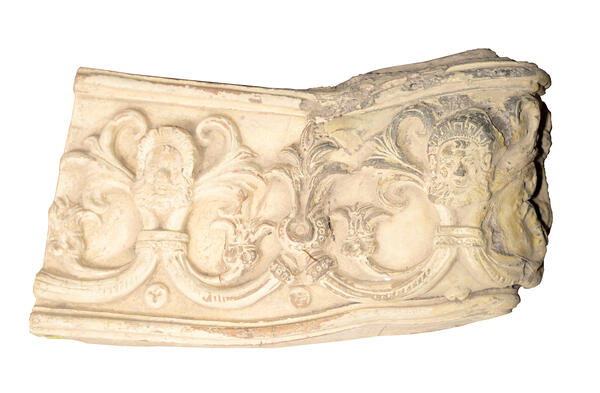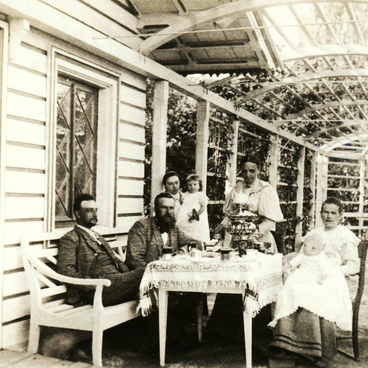Many ceramic products, including tiles were found during excavations on the territory of the former German colony of Sarepta. Antique style fireplace tile was made in the late 19th - early 20th century and is covered with glaze and decorated with intricate ornament.
In 1768, a pottery workshop was built in Sarepta. Clay was one of the most accessible materials in the settlement. It was used to make dishes, roof tiles, and all kinds of tiles needed not only in households, but also in industry.
The government of Catherine the Second pinned special hopes on the settlers as bearers of a more advanced culture in crafts and production. 40% of the first settlers were workers and craftsmen.
However, for almost two decades of living on the Volga, tile masters could hardly find application for their knowledge and skills due to low demand. Local craft production turned into a household craft that did not give any income.
Typically, each residential building in Sarepta had two fireplaces. They could heat two or four rooms at the same time. Traditional German furnaces, ‘grubka’, made of metal or ceramics, could also be attached to the fireplaces. Cooking stoves of a hearth type or with boilers embedded in the firebox were attached, for cooking to the main chimney in the kitchen.
Glazed tile stoves appeared in Russia in the 16th century. They were borrowed from Europe. Such stoves performed both heating and decorative functions. The stoves were faced with tiles - special box-shaped ceramic tiles. The front surface of the tiles could be smooth or embossed, sometimes had a glaze coating. They often depicted subject compositions, flower patterns.
Unlike the Dutch tile the glazed tile has a more complex shape due to the ‘leg’ - the rump. The rump in the stove tile serves as a fastening element. It has holes for the fastening wire. the tiles are binded on the stove, that is, they are connected to each other with wire or special fasteners. Such connection of the tile reliably holds the shape of the outer body of the stove, regardless of the processes taking place on the inner contour of the tile stove.
In 1768, a pottery workshop was built in Sarepta. Clay was one of the most accessible materials in the settlement. It was used to make dishes, roof tiles, and all kinds of tiles needed not only in households, but also in industry.
The government of Catherine the Second pinned special hopes on the settlers as bearers of a more advanced culture in crafts and production. 40% of the first settlers were workers and craftsmen.
However, for almost two decades of living on the Volga, tile masters could hardly find application for their knowledge and skills due to low demand. Local craft production turned into a household craft that did not give any income.
Typically, each residential building in Sarepta had two fireplaces. They could heat two or four rooms at the same time. Traditional German furnaces, ‘grubka’, made of metal or ceramics, could also be attached to the fireplaces. Cooking stoves of a hearth type or with boilers embedded in the firebox were attached, for cooking to the main chimney in the kitchen.
Glazed tile stoves appeared in Russia in the 16th century. They were borrowed from Europe. Such stoves performed both heating and decorative functions. The stoves were faced with tiles - special box-shaped ceramic tiles. The front surface of the tiles could be smooth or embossed, sometimes had a glaze coating. They often depicted subject compositions, flower patterns.
Unlike the Dutch tile the glazed tile has a more complex shape due to the ‘leg’ - the rump. The rump in the stove tile serves as a fastening element. It has holes for the fastening wire. the tiles are binded on the stove, that is, they are connected to each other with wire or special fasteners. Such connection of the tile reliably holds the shape of the outer body of the stove, regardless of the processes taking place on the inner contour of the tile stove.



